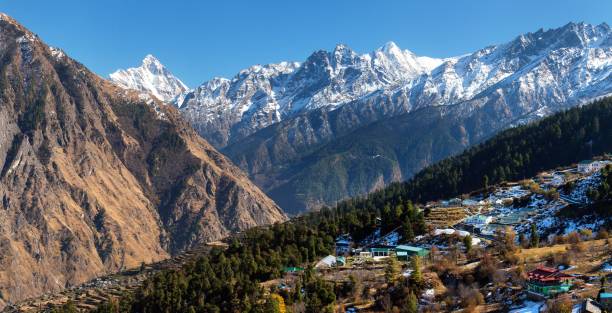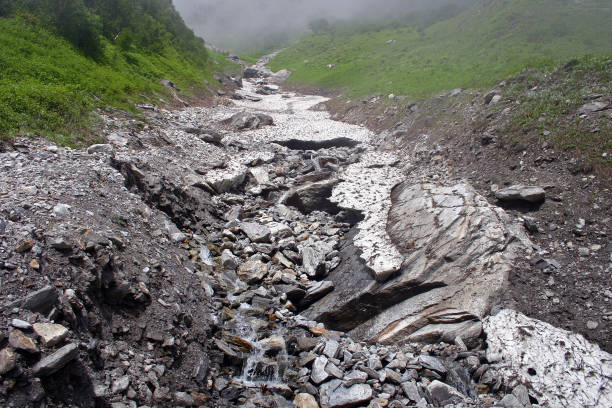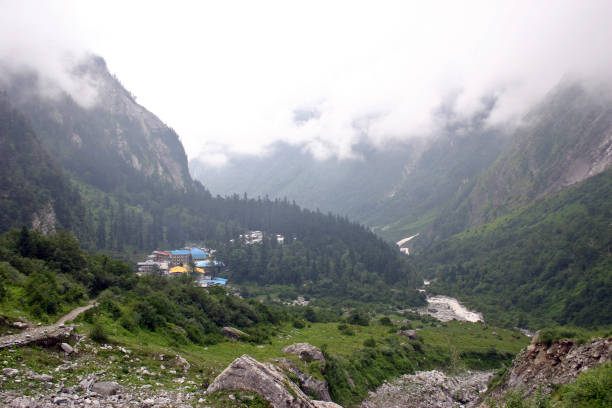
Wilderness Wonders: Exploring Nanda Devi National Park .UK.
Nestled in the majestic Himalayan range of Uttarakhand, India, lies a haven of natural splendor and biodiversity – Nanda Devi National Park. Spanning over 630 square kilometers, this UNESCO World Heritage Site is a testament to the unparalleled beauty and ecological significance of the Himalayas. In this blog post, we delve into the wonders of Nanda Devi National Park, from its rich flora and fauna to its cultural and historical significance.
A Natural Wonderland
At the heart of Nanda Devi National Park stands the towering peak of Nanda Devi, the second highest mountain in India and the highest entirely within the country’s borders. The park’s landscape is dominated by rugged terrain, deep gorges, high-altitude meadows (bugyals), and pristine glaciers, making it a paradise for adventure seekers and nature enthusiasts alike.
The park is home to a diverse range of flora, including alpine flowers like Brahma Kamal, orchids, rhododendrons, and junipers. During the summer months, these meadows burst into a riot of colors, creating a breathtaking spectacle against the backdrop of snow-clad peaks. The region’s rich biodiversity also extends to its fauna, with species such as the elusive snow leopard, Himalayan black bear, musk deer, and a variety of avian species calling the park home.
Cultural Heritage
Apart from its natural beauty, Nanda Devi National Park is steeped in cultural and religious significance. The Nanda Devi peak itself holds immense spiritual importance for the locals, who consider it to be a sacred abode of the goddess Nanda Devi. The park’s surrounding areas are dotted with traditional Himalayan villages inhabited by communities like the Bhotias and the Garhwalis, whose way of life is closely intertwined with the mountains and forests.

Visitors to the park can immerse themselves in the local culture by interacting with the friendly villagers, learning about their customs, and tasting traditional Garhwali cuisine. The villages also serve as starting points for treks into the park, providing a glimpse into the daily lives of mountain dwellers and their age-old traditions.
Valley of Flowers: A Floral Paradise:
- Introduction to the Valley of Flowers, a UNESCO World Heritage Site within the park.
- Describe the mesmerizing beauty of the valley during the blooming season.
- Trekking opportunities and experiences in the Valley of Flowers.

Trekking and Adventure
For adventure enthusiasts, Nanda Devi National Park offers a plethora of trekking opportunities that cater to varying skill levels. The park is renowned for its challenging yet rewarding treks, including the Nanda Devi Inner Sanctuary trek, the Valley of Flowers trek, and the Milam Glacier trek. These treks take visitors through diverse landscapes, from dense forests and meadows to rocky moraines and high-altitude passes, offering stunning vistas at every turn.
One of the highlights for trekkers is the Valley of Flowers, a UNESCO World Heritage Site located within the park. This picturesque valley is a floral paradise, adorned with a vibrant carpet of alpine flowers during the monsoon season. Trekking through this ethereal landscape is an experience that leaves a lasting impression on all who venture into its embrace.
Conservation and Sustainability
As a UNESCO World Heritage Site and a national park, conservation efforts are paramount in Nanda Devi National Park. Strict regulations are in place to protect the park’s fragile ecosystem and biodiversity. Visitors are required to obtain permits from the forest department, and camping is restricted to designated areas to minimize human impact on the environment.
Best Time to Visit and Travel Tips
- Provide insights into the best time to visit Nanda Devi National Park based on seasons.
- Travel tips including permit requirements, accommodation options, and transportation.
- Recommended itineraries for exploring the park and nearby attractions.
Conclusion
Nanda Devi National Park stands as a testament to the awe-inspiring beauty and ecological richness of the Himalayas. Whether you’re a nature lover, an adventure enthusiast, or a cultural explorer, the park offers a myriad of experiences that captivate the senses and nourish the soul. As we strive to protect our planet’s natural wonders, places like Nanda Devi serve as reminders of the need for conservation and sustainable practices in preserving Earth’s biodiversity hotspots. So, pack your bags, lace up your hiking boots, and embark on a journey to discover the enchanting beauty of Nanda Devi National Park.
frequently asked questions (FAQs)
Nanda Devi National Park is a UNESCO World Heritage Site located in Uttarakhand, India. It is known for its stunning natural beauty, diverse flora and fauna, and cultural significance.
The best time to visit Nanda Devi National Park is during the summer months from May to June and the post-monsoon season from September to October. These months offer pleasant weather and clear views of the Himalayan peaks.
Some of the main attractions of Nanda Devi National Park include the Nanda Devi peak, Valley of Flowers, alpine meadows (bugyals), diverse wildlife including snow leopards and Himalayan birds, and the cultural heritage of nearby villages.
Yes, permits are required to enter Nanda Devi National Park. Visitors need to obtain permits from the forest department or authorized agencies before entering the park. It is recommended to check the latest permit requirements and regulations before planning your trip.
Nanda Devi National Park offers several trekking opportunities for adventure enthusiasts. Popular treks include the Valley of Flowers trek, Nanda Devi Inner Sanctuary trek, Milam Glacier trek, and Roopkund trek. These treks vary in difficulty and offer breathtaking views of the Himalayan landscapes.
Camping is allowed in designated areas within Nanda Devi National Park with proper permits and permissions. Visitors are advised to follow eco-friendly practices and regulations to minimize environmental impact during their camping experience.
Nanda Devi National Park is dedicated to conservation and sustainable tourism practices. Efforts include strict regulations on visitor numbers, waste management, protection of endangered species like snow leopards and musk deer, and community involvement in conservation initiatives.
The nearest major town to Nanda Devi National Park is Joshimath, which is well-connected by road to major cities like Rishikesh and Dehradun. From Joshimath, further travel arrangements can be made to reach the park’s entry points or nearby trekking trails.
